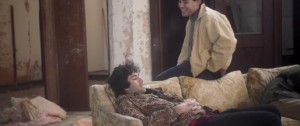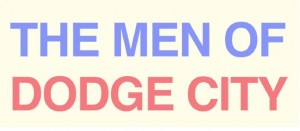 The Men of Dodge City (Nandan Rao, 2012, 93 min)
The Men of Dodge City (Nandan Rao, 2012, 93 min)
The Other Men of Dodge City (Nandan Rao, 2014, 77 min)
4070 Vilas Hall, Sun Mar 16, 7pm»
Rumor has it that after Terrence Malick finished The Thin Red Line, he had planned to use his many hours of footage to create a completely new film. He never did this, but I always wondered what it would look like. When watching Tomas Alfredson’s Tinker Tailor Soldier Spy, it fascinated me that the filmmakers chose to place the first scene of the source novel squarely in the middle of the film. What moments to use and where to use them, what moments to lose and when to lose them—these are choices that should interest anyone interested in storytelling.
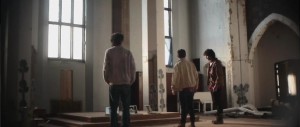 Choices like these are at the very heart of this week’s installment in the Micro-Wave Cinema Series, a double-bill of The Men of Dodge City and The Other Men of Dodge City. After director Nandan Rao released the original version, he was approached by filmmakers Andrea Sisson and Pete Ohs, who wanted a chance to re-edit the film. Sisson and Ohs had all of Rao’s footage at their disposal for the new version. Both films are ostensibly about a group of twenty-somethings who plan to open a shared art space in a dilapidated church in Detroit, but the films differ wildly in how they leverage the same source footage to provide inexorably intertwined yet completely distinct viewing experiences.
Choices like these are at the very heart of this week’s installment in the Micro-Wave Cinema Series, a double-bill of The Men of Dodge City and The Other Men of Dodge City. After director Nandan Rao released the original version, he was approached by filmmakers Andrea Sisson and Pete Ohs, who wanted a chance to re-edit the film. Sisson and Ohs had all of Rao’s footage at their disposal for the new version. Both films are ostensibly about a group of twenty-somethings who plan to open a shared art space in a dilapidated church in Detroit, but the films differ wildly in how they leverage the same source footage to provide inexorably intertwined yet completely distinct viewing experiences.
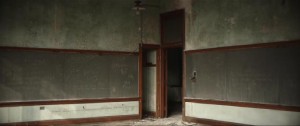 Rao’s camera in The Men of Dodge City is one of relentless immobility and lingering takes. Composition is the name of the game, and Rao’s is impeccable. The use of the abandoned church is a veritable cinematographic playground when it comes to composing shots, and the lingering way in which Rao shoots the film makes it as much (if not more) a film about the space as the characters. It is also filled with identifiable everyday moments that transcend their mundane nature into the realm of the absurdly hilarious (like the misery of hearing nothing but a turn signal at a light that just…won’t…turn…green, or a conversation where the word “domes” may be uttered more times than any other single exchange in cinema history).
Rao’s camera in The Men of Dodge City is one of relentless immobility and lingering takes. Composition is the name of the game, and Rao’s is impeccable. The use of the abandoned church is a veritable cinematographic playground when it comes to composing shots, and the lingering way in which Rao shoots the film makes it as much (if not more) a film about the space as the characters. It is also filled with identifiable everyday moments that transcend their mundane nature into the realm of the absurdly hilarious (like the misery of hearing nothing but a turn signal at a light that just…won’t…turn…green, or a conversation where the word “domes” may be uttered more times than any other single exchange in cinema history).
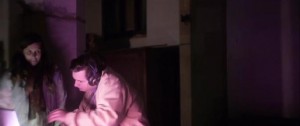 Whereas Rao’s original film consists of shots that often serve as entire sequences, Andrea Sisson and Pete Ohs’ recut of the film, The Other Men of Dodge City, seems more direct in terms of the central narrative, based solely on the fact that a crucial conversation dealing with the goal of the main character (i.e. what the church is to be used for) comes much earlier in the new version. That said, the new version is bursting with music where the original had next to none, and the new version’s use of music is both playful and instructive. It hits home the notion of the soundtrack as a propulsive element of pacing. As I mentioned earlier, sole shots can serve as complete sequences in the original, but when set to music and juxtaposed in different sequences, the new version treats them almost as a conventional montage sequence. Dialogue as voiceover, existing shots reframed with digital zooms, intercutting, playing with diagetic vs. non-diagetic sound—these are for the most part conventional techniques that are leveraged here to make the oblique original simultaneously more conventional and even more esoteric.
Whereas Rao’s original film consists of shots that often serve as entire sequences, Andrea Sisson and Pete Ohs’ recut of the film, The Other Men of Dodge City, seems more direct in terms of the central narrative, based solely on the fact that a crucial conversation dealing with the goal of the main character (i.e. what the church is to be used for) comes much earlier in the new version. That said, the new version is bursting with music where the original had next to none, and the new version’s use of music is both playful and instructive. It hits home the notion of the soundtrack as a propulsive element of pacing. As I mentioned earlier, sole shots can serve as complete sequences in the original, but when set to music and juxtaposed in different sequences, the new version treats them almost as a conventional montage sequence. Dialogue as voiceover, existing shots reframed with digital zooms, intercutting, playing with diagetic vs. non-diagetic sound—these are for the most part conventional techniques that are leveraged here to make the oblique original simultaneously more conventional and even more esoteric.
It’s often said that films are really made in the editing room. Watch these two movies, and you’ll see just how true that statement really is. Add to that the opportunity to talk to filmmakers live and the knowledge that you have the chance to experience a screening few people in the country do, and you’re in for something special. Don’t miss it.
If you want to know more about the series as a whole, including what films are playing in the future, check out the series’ Facebook page and our interview with the series’ founder, Brandon Colvin.
